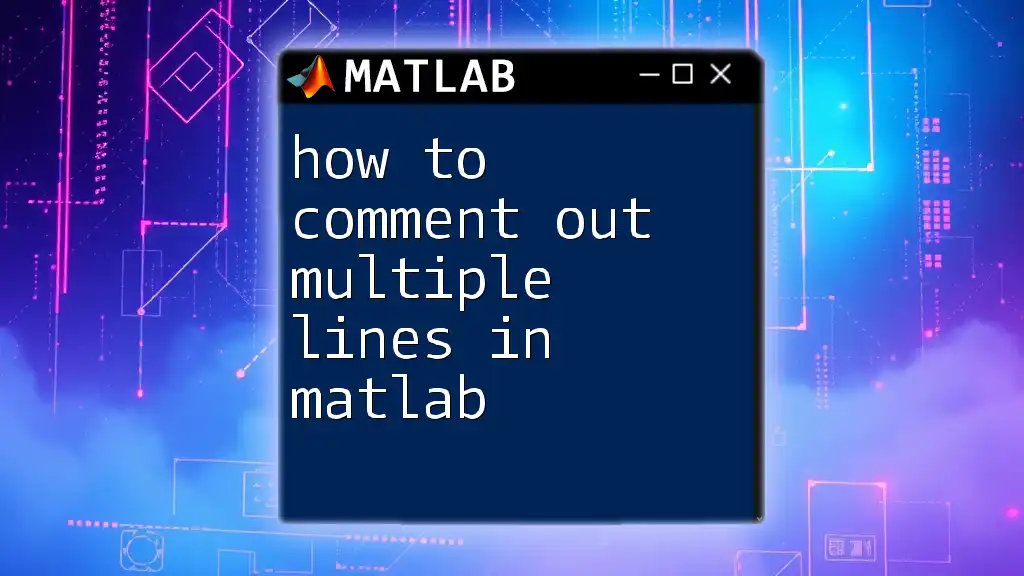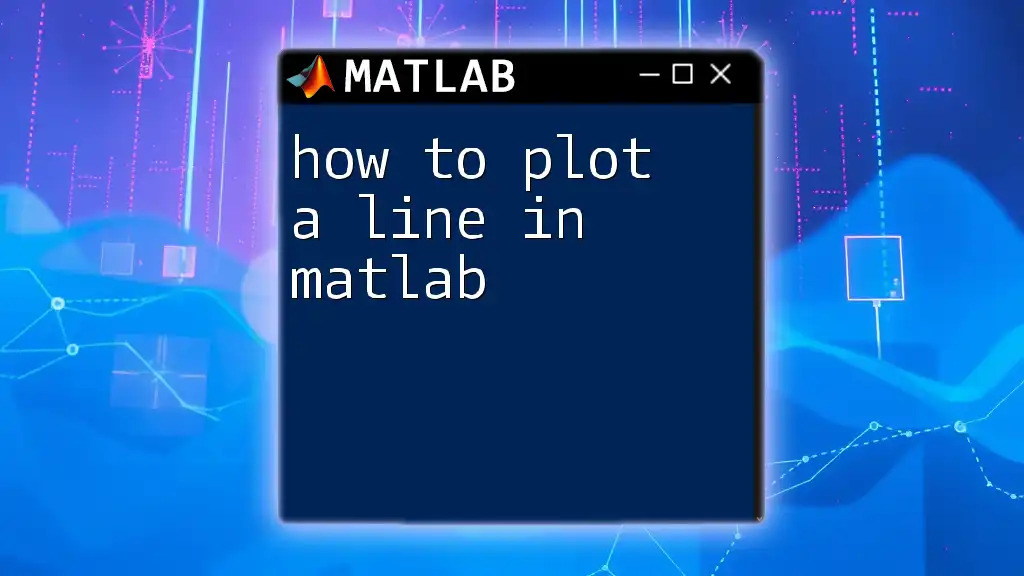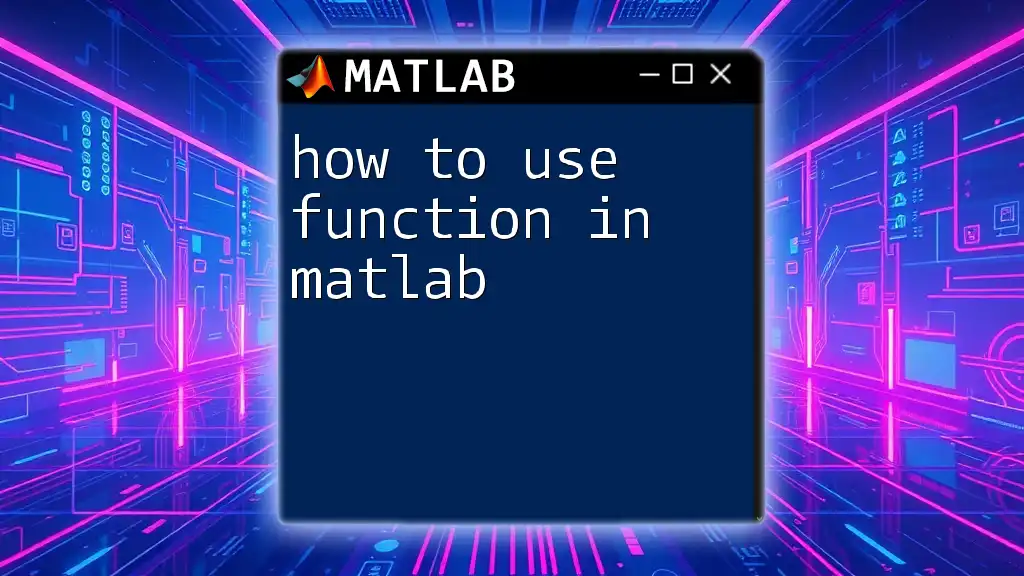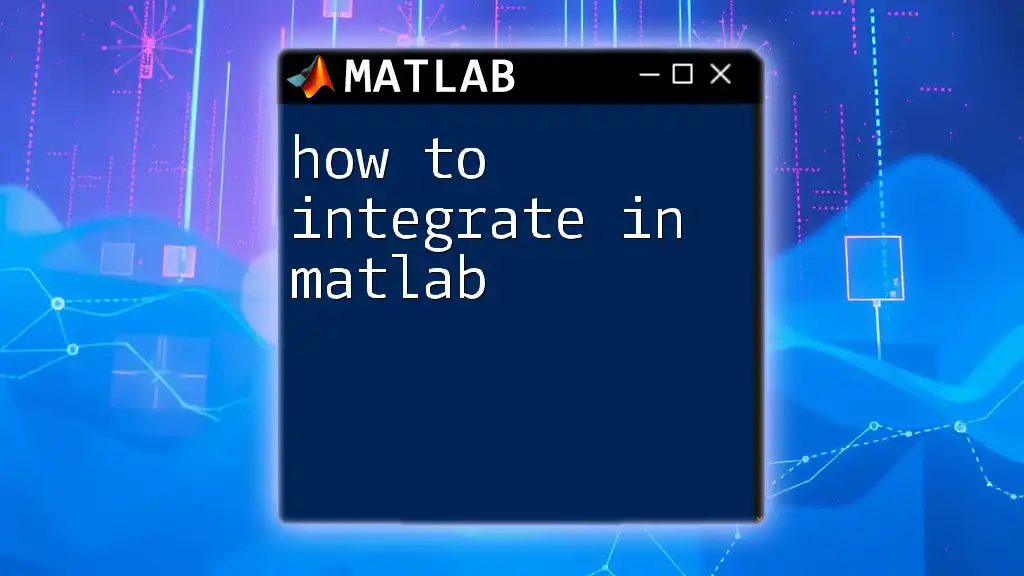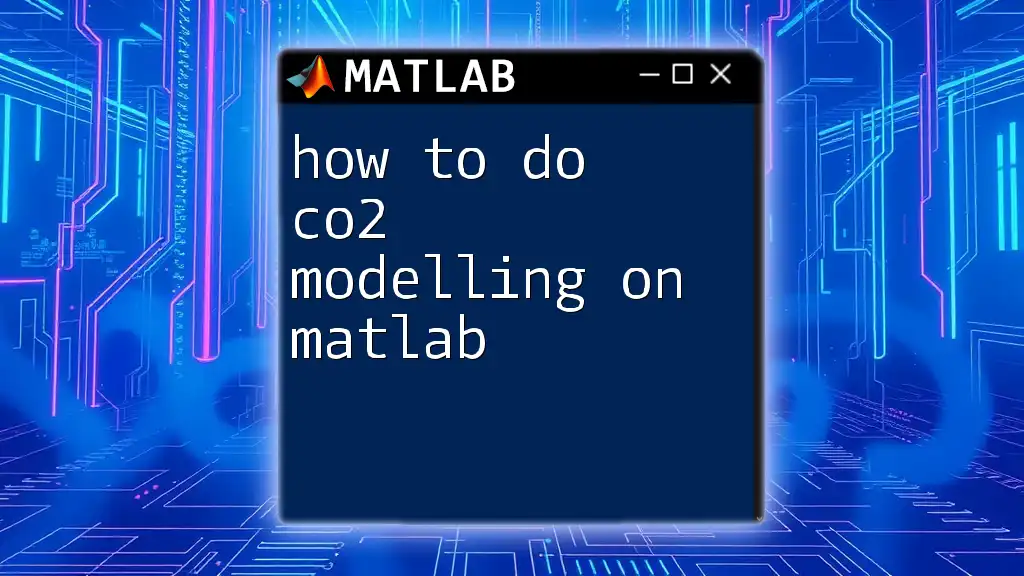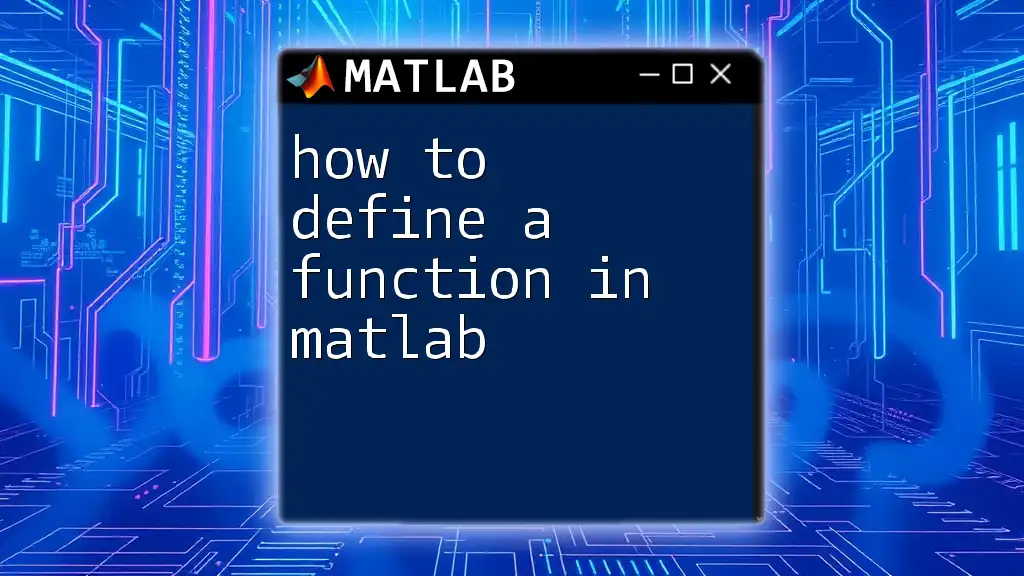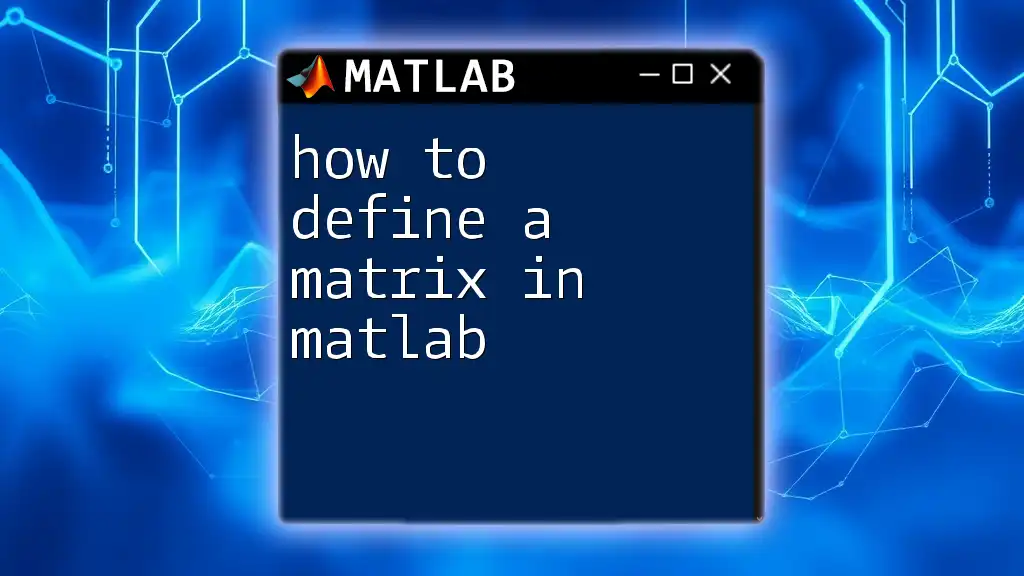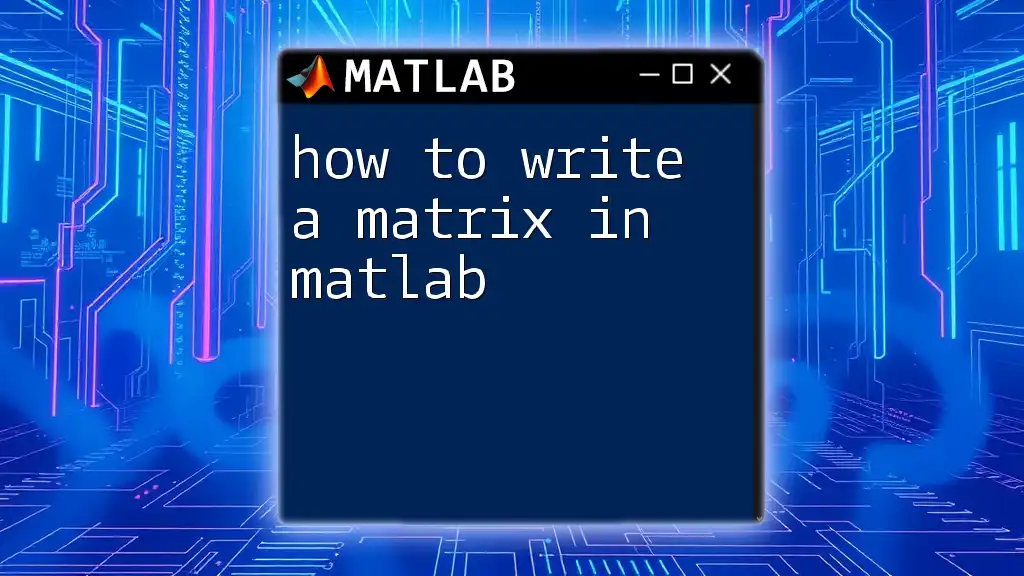In MATLAB, you can comment out multiple lines by using the `%` symbol at the beginning of each line or by enclosing the lines with `%{` and `%}`, as shown in the following example:
%{
This is a comment that spans
multiple lines in MATLAB.
%}
Understanding Comments in MATLAB
What are Comments?
In programming, comments are fragments of text written alongside the actual code, which are ignored by the compiler or interpreter. They serve as annotations to help developers understand what a particular piece of code is meant to do. In MATLAB, using comments is essential for improving code readability, making it easier to debug, and providing documentation for future reference.
Types of Comments in MATLAB
In MATLAB, there are primarily two types of comments:
-
Single-line comments: These are created using the `%` symbol. For example, to comment on a specific line of code, you would use:
% This is a single-line comment -
Multi-line comments and their limitations: To comment out multiple lines of code using single-line comments, you'd have to prefix each line with `%`. While effective, this method can quickly clutter your code, especially if the commented section is long.

Commenting Out Multiple Lines in MATLAB
Using the Block Comment Feature
MATLAB provides a convenient feature for commenting out multiple lines called block comments. This is particularly useful for including detailed explanations or temporarily disabling larger sections of code without cluttering your script.
To create a block comment in MATLAB, you simply enclose the desired code with `%{` to start the comment and `%}` to end it:
%{
This is a block comment
Commenting out multiple lines is easy
%}
This feature allows you to seamlessly comment out sections of code without repetitive symbols, enhancing the clarity of your script. It’s an excellent way to add notes or disable code during debugging.
Using the Editor’s Built-in Functionality
MATLAB’s editor comes equipped with built-in functionalities that streamline the commenting process for multiple lines. Here’s how to effectively use these features:
-
Highlighting text: Select the lines of code you wish to comment out by clicking and dragging your cursor over them.
-
Using the toolbar: After highlighting, navigate to the toolbar where you can find the comment button (it looks like a small note icon) that allows you to comment out the selected lines with a click.
-
Keyboard shortcuts: For quicker commenting and uncommenting, you can utilize keyboard shortcuts. In most instances, pressing `Ctrl + R` will comment the selected lines, while `Ctrl + T` will uncomment them.
This functionality not only speeds up your coding process but also significantly reduces the potential for errors associated with manually entering comment symbols.
Best Practices for Commenting
Clarity and Conciseness
When writing comments, it is vital to keep them clear and concise. Always aim to explain the what, why, and sometimes the how of the code without overwhelming the reader with excessive detail. Good comments should provide context and insights that are not immediately apparent from the code itself.
For instance, instead of simply stating:
% Calculate the sum
total = sum(data);
You might say:
% Calculate the total sum of the dataset for analysis
total = sum(data);
Avoiding Over-Commenting
While comments are necessary, it’s equally important to avoid over-commenting. Excessive comments can clutter the code and detract from its readability. A good rule of thumb is to comment only when your reasoning is not immediately clear from the code, or when specific implementation details may escape someone unfamiliar with the script.

Practical Examples
Example 1: Commenting Out a Section of Code
Consider a situation where you are working on a script containing multiple functions, and you want to temporarily disable a section for testing. Instead of adding `%` to every line, you can use block comments:
%{
function result = myFunction(x)
result = x^2; % Calculate square
end
%}
Using block comments here readily clarifies that the `myFunction` will not execute until you decide to uncomment it. This feature allows you to present a cleaner version of your code, making it easy to follow without unnecessary interruptions from comments.
Example 2: Temporary Testing and Debugging
When debugging, you might need to verify specific outputs. You can easily comment out sections of code such as display functions, ensuring that only the key parts run:
%{
% Debugging output
disp('The value of x is:');
disp(x);
%}
In this example, you can comment out the disp lines quickly, allowing you to focus on the rest of the script without those outputs cluttering your workspace.
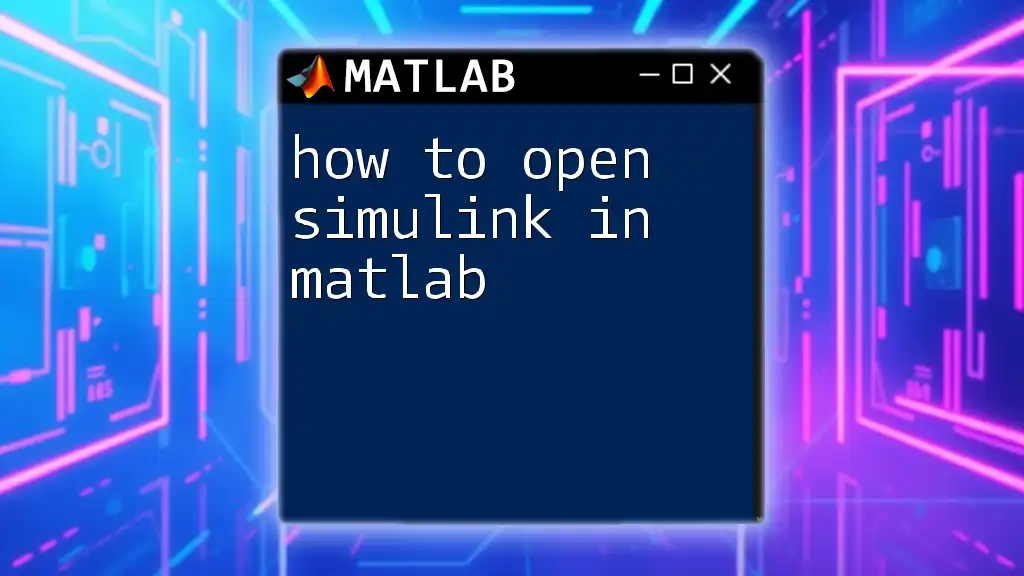
Conclusion
Effectively utilizing comments, especially when learning how to comment out multiple lines in MATLAB, is crucial for developing clean, manageable, and understandable code. By employing block comments and the editor's built-in functionalities, you can streamline your coding process and enhance your programming practices.
Be sure to practice these techniques, as they will serve you well in future MATLAB projects. Additionally, don't hesitate to reach out for more tips or enroll in specialized courses to further your MATLAB skills!
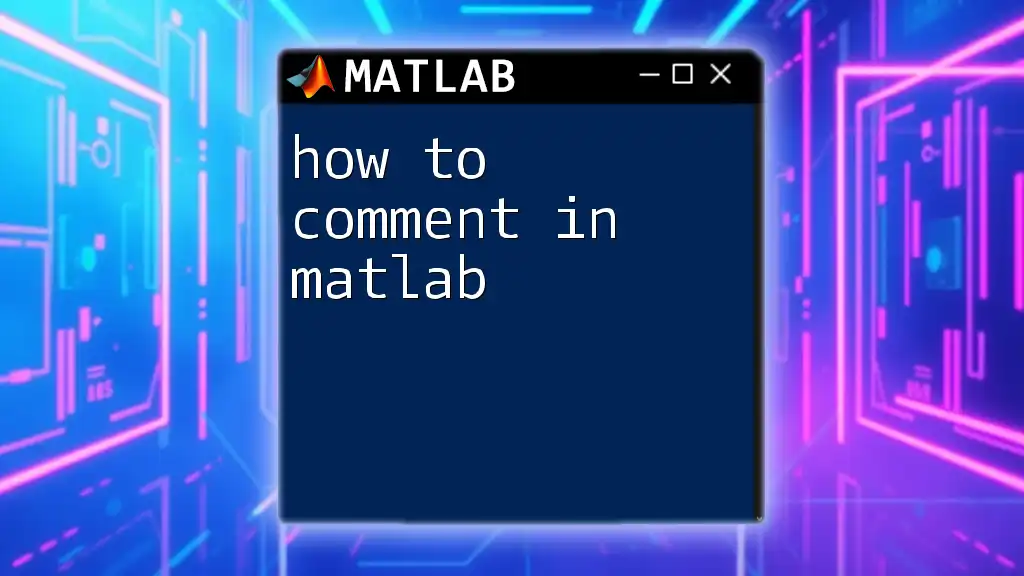
Additional Resources
For further exploration, consider checking out MATLAB's official documentation on comments for deeper insights and alternative uses. Also, looking into programming best practices will sharpen your skills in creating clear and effective code not just in MATLAB but across various programming languages.

